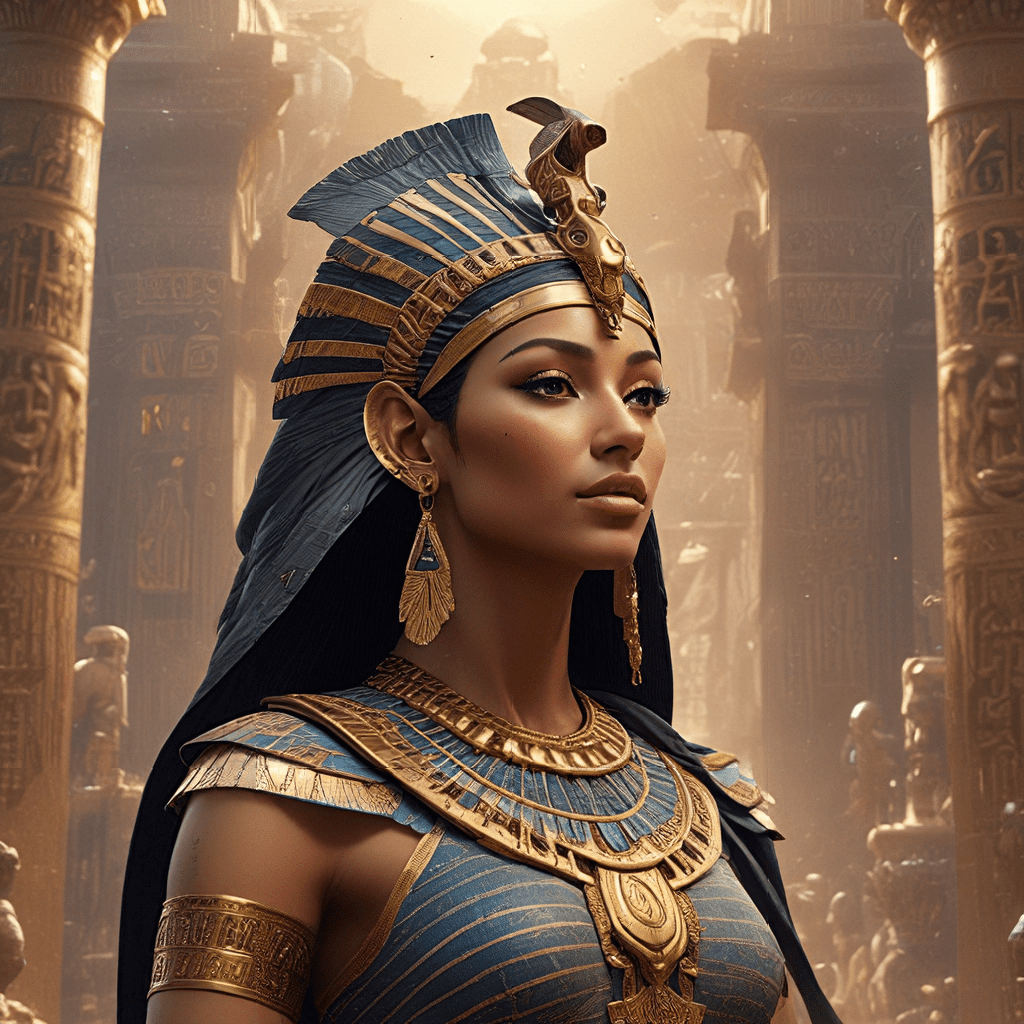The Cosmic Dance of Creation: A Visual Exploration of Egyptian Mythology
Ancient Egyptian mythology is a rich tapestry of stories, beliefs, and symbols that have captivated minds for millennia. It offers a glimpse into the worldview of a civilization that saw the universe as a dynamic, interconnected system, filled with gods and goddesses, magical creatures, and the constant interplay of creation and destruction. This article delves into the captivating visual world of Egyptian creation myths, exploring the key deities, their roles, and the enduring impact of these stories on art and culture.
1. The Primeval Waters: Nun and the Void
At the beginning of time, according to Egyptian mythology, there was only an endless expanse of primordial waters, known as Nun. This chaotic, formless void was the ultimate source of all creation. Nun was not merely water but a representation of the potential for all existence. Before the emergence of order, everything resided within the vastness of Nun. It was a state of limitless possibility, but also one of absolute emptiness.
2. The Emergence of Order: Atum, the Self-Created One
From the primordial waters of Nun emerged Atum, the self-created god. Often depicted as a human with a ram’s head, Atum embodies the principle of creation and is the starting point of the entire Egyptian pantheon. He emerged from the void, representing the first spark of consciousness and order. Atum was the ultimate creator, bringing forth light from darkness and shaping the universe. He was said to have created the world through a process of self-creation, speaking words that manifest reality, a concept known as *Ma’at*.
3. The Birth of the Ennead: The First Nine Gods
From Atum, the first nine gods, known as the Ennead, were born. These deities represent the fundamental elements of creation and cosmic order. Shu, the god of air, and Tefnut, the goddess of moisture, emerged from Atum’s own body. From their union came the earth god Geb and the sky goddess Nut. Other members of the Ennead include Osiris, Isis, Seth, Nephthys, and Horus. These primordial gods, and their relationships, formed the framework for Egyptian creation myths.
4. The Eye of Ra: The Cosmic Force of Creation and Destruction
One of the most powerful and enduring symbols in Egyptian mythology is the Eye of Ra. This divine eye, often depicted as a cobra or a falcon, represents the sun god Ra’s boundless energy and the creative and destructive forces of the universe. The Eye of Ra embodies the force of *Ma’at*, the cosmic order, and is responsible for both bringing light and life to the world but also destroying evil and chaos. It represents the cyclical nature of life, death, and rebirth, a core element of Egyptian belief.
5. The Sun God Ra: The Daily Journey Across the Sky
Ra, the sun god, holds a central position in Egyptian mythology. He is the god of light, warmth, and life, responsible for the daily cycle of the sun across the sky. Ra is depicted as a falcon-headed god, riding a solar bark through the heavens. In the underworld, Ra battles the forces of darkness and chaos, ensuring the renewal of dawn. This journey, repeated daily, represents the eternal cycle of creation, destruction, and renewal, a concept foundational to Egyptian thought.
6. The Underworld and the Afterlife: Osiris, Isis, and Horus
Osiris, the god of the underworld, plays a pivotal role in Egyptian beliefs about the afterlife. He is often depicted as a green-skinned god, symbolizing rebirth and fertility. Osiris was murdered by his brother Seth, representing the forces of chaos. Osiris’s wife, Isis, brought him back to life, but he was unable to return to the living world. Their son, Horus, avenged Osiris’ death and became the king of the gods. The myth of Osiris, Isis, and Horus speaks to the importance of justice, divine retribution, and the cyclical nature of life, death, and rebirth.
7. The Divine Feminine: The Power of Goddesses
In Egyptian mythology, goddesses play vital roles in creation, fertility, protection, and healing. From the primordial goddess Nut, the sky, to Isis, the mother goddess, and Hathor, the goddess of love, music, and joy, female deities embody a wide range of powers and attributes. These goddesses represent the feminine principle, often associated with the nurturing and creative aspects of the universe. Their presence highlights the importance of the feminine in both human and divine spheres.
8. The Role of Animals in Mythology: Sacred Animals and Divine Forms
Animals play a significant role in Egyptian mythology, often embodying specific divine attributes. The falcon, for example, is associated with the sun god Ra, while the jackal is connected to Anubis, the god of mummification. Sacred animals were believed to have divine powers and were often worshipped in their own right. The presence of animal forms reflects the Egyptians’ close relationship with the natural world and their understanding of its power and mysteries.
9. The Creation of Humanity and the Divine Order
According to Egyptian mythology, humanity was created by the gods, often depicted as a divine act of craftsmanship. The relationship between humans and the gods was seen as reciprocal, with humans obligated to serve the gods while the gods provided protection and guidance. This relationship, marked by both reverence and responsibility, reflects a fundamental worldview in which the divine and the earthly were interconnected.
10. The Impact of Egyptian Mythology on Art and Culture
Egyptian mythology had a profound impact on almost every aspect of Egyptian culture, including art, architecture, religion, and everyday life. The gods and goddesses were depicted in numerous works of art, including paintings, sculptures, and reliefs, often adorning temples, tombs, and other important structures. The stories of the gods influenced religious rituals, burial practices, and the understanding of the cosmos. The enduring legacy of Egyptian mythology is evident in the continued fascination with its symbolism, imagery, and rich narratives.




